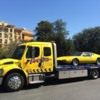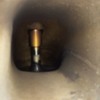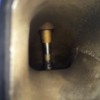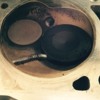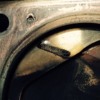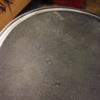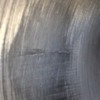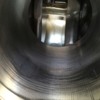On my way back to the office, the car seemed like it wanted to die when I was coming to a stop. Blipped the throttle and all seemed good. Was sitting at a red light idling when the engine just died. Tried to start it and she would not crank over - Heat? Ground issue? Or worse? I jumped out and pushed her over to the curb, around a corner, and into a parking lot to get out of the roadway. Popped the rear decklid and found the air cleaner nut loose atop the air cleaner. Pulled the air cleaner lid off and found that the air cleaner stud was missing - it had snapped off. And unfortunately it was not sitting in the air cleaner housing or the carb. It apparently made it past the butterflies.
Tomorrow night I'll pull the carb and see if I can find it in the intake manifold. Hopefully it didn't drop into a head and lodge itself between the head and a valve, or worse. I'll keep you guys posted.
Quite disappointing/frustrating! At least the rig matches the car.


